It’s probably happened in your house: The kids are totally happy to eat their snacks, but when it comes to sitting down and sharing family meals, it’s a battle. Enter, these simple strategies that will help reset the balance on kids snacks and (hopefully!) reduce the mealtime drama.

Kids Snacks
Since the 1970s, we’ve all started eating more snacks in our days. This means that we’re simply eating more snacks in general, and we’re eating more “snack food” such as packaged crackers, chips, bars, pouches, and yogurt. There are more of these foods in the marketplace and snacks now make up about ⅓ of the calories that us and our kids eat.
BUT. That is not in itself a problem since so much of how we eat has also changed. It can cause challenges, though, for a variety of reasons including: “snack” foods are often easier to eat, they’re very uniform in flavor (unlike fresh fruit which can be sweet, tart, or musky, depending) so are easy for the kids to predict and rely on, and they are made to be super delicious. And those preferences can sometimes mean that kids don’t want “meals”, which can be incredibly stressful.
(It’s worth noting that no food exists in a vacuum and often, the dynamic around eating can contribute to preferences and eating habits too. I dislike that our culture is so fast to blame certain foods when in reality, the context in which we’re eating any food always matters a lot, too. These books about food and picky eating informed a lot of my thinking on this topic.)
If snacks are causing stress in your house and you’re looking for a few simple ways to help, the following tips are for you.
Table of Contents
Your toddler won’t eat? Help is here!
Sign up for our email updates to get tips and ideas sent to your inbox.
1. Think of “Snack” as a Time to Eat, Not a Category of Food
“Snack food” usually means foods like pretzels, chips, granola bars, and the like, but I have found that it helps my mindset to think of all eating opportunities for little kids as “mini meals”. This way, I more instinctually think of a wider range of food for each mini meal and am not always reaching for the same foods at each.
2. Serve the Same Types of Foods at Meals and Snacks
One of the reasons that kids get super excited about snack time, and not meal time, is that “snack” food tend to be more fun than “regular” food and more predictable in flavor and texture One simple way to reset the balance if the kids happily eat their snacks but protest at dinner is to serve all food at all meals. Add some crackers to soup, serve some veggies with a yogurt pouch, have a snack bar with a smoothie for breakfast.
This can help reduce the feeling that “snack foods” are saved for special times of the day, which may help the kids realize that they will see these foods regularly…and relax enough to eat other foods too.
3. Rethink “Healthy Snacks”
Honestly, “healthy” means something different to everyone so I try to use more specific language and get to the underlying worry whenever I hear a parent worried about kids snacks. To me, the goal with snacks is to provide the kids with enough energy to fuel them until the next time to eat. What that may require from a food standpoint can vary from day to day. Some days snacks maybe simple foods like cheese and fruit, others it might be a cookie with milk or a granola bar.
Some days we may need to add fat and protein to a snack to ensure that we can last until we can eat again. Or to satisfy during growth spurts.
Others, simple crackers or just a banana or apple is all we need to feel full and ready to go. Food is, for sure, not one size fits all.
4. Have Snacks at the Table
I fully realize that there are times when eating on the go is necessary—and that “snack foods” are usually easier to eat in those circumstances, but whenever possible, have the same dynamics at snack time as you do at meal times to help make all eating opportunities feel similar. Which can mean sitting down at the table every time it’s time to eat.
(This also reduces the risk of choking in little kids which is always a plus.)
5. Allow Favorite Snacks in the Mix
One of the best ways to help kids to be less obsessed with their favorite foods is to let the kids eat them! (Sounds counter-intuitive, I know. These books have more tips about this.) In our house, this means we almost always have Goldfish crackers and Zbars, and we cycle through them at snack times with other foods in the mix too. We keep them in the pantry and the kids have a choice at snack time—and I remind them of the options that are in the fridge, too.
This can help to precent a scarcity mindset that can cause food fixation in some kids and can reduce how much the kids worry about when they’ll be able to have that favorite food again (which can be really stressful for little kids who have no control over what foods they’re being served).
I’ve also seen almost every favorite food become a food that no one has interest in. When something is allowed, it’s natural to not want it at times.
6. Allow Time Between Meals and Snacks
A simple reason that a child may eat their snack but not the meal that follows is that they simply aren’t hungry. So if you have a toddler who doesn’t always eat their dinner, look at how long it’s been since their afternoon snack and consider allowing more time or just adjusting your expectations for how much they may eat at dinnertime. (If you’re serving more or less similar foods for all meals, dinner doesn’t have more inherent value than afternoon snack.)
Most kids should have 2-3 hours between each eating opportunity. And also, some kids just aren’t always hungry for dinner, no matter how much or little they ate at the meals or snacks that preceded it. Appetite fluctuations are variable and appetite is very unique to each person.
And for little kids, it’s very normal for hunger to taper as the day goes on, with more intake earlier in the day and less towards dinner.
7. Remember that Snacks are Food
It’s okay for kids to have preferences. It’s okay for us parents to have some structure and routines. We don’t have to do any of this perfectly, and you will likely go through phases with snacks in your house.
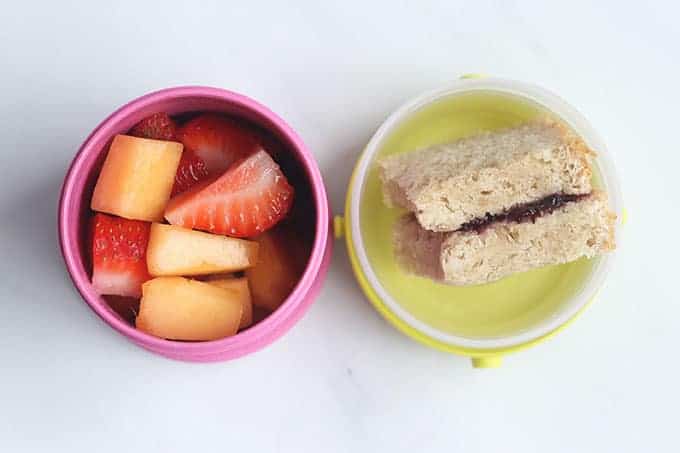
Related Posts
I’d love to know what you think about this topic, so please chime in below to share your thoughts and feedback!
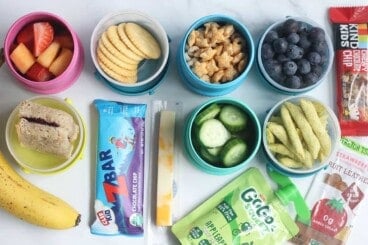
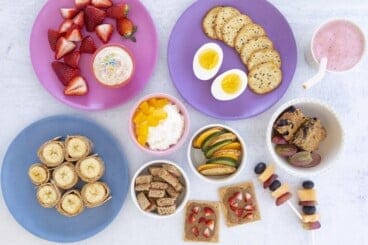
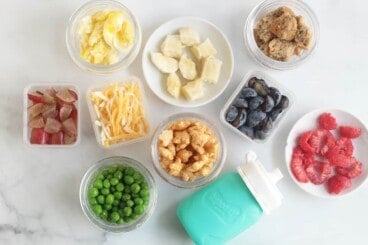
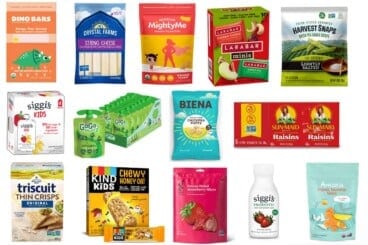



















This is terrible advice. The child needs to listen to you and understand snacks are for snack time NOT MEAL TIME. Just remove the snacks from the household until they learn!
That’s assuming they will never see “snacks” anywhere else and also that there’s a big difference between snack foods and mealtime foods, which there may or may not be. Part of the reason many kids like snack type foods is that they are restricted, so it can actually help to not make such a big deal of them. You can, of course, do whatever you prefer.
So thankful to you Amy ? Loved your ideas for snacking and rewarding children. Great simple tips to reduce daily pressures, encouraging us parent’s & little ones ?
You’re so welcome!